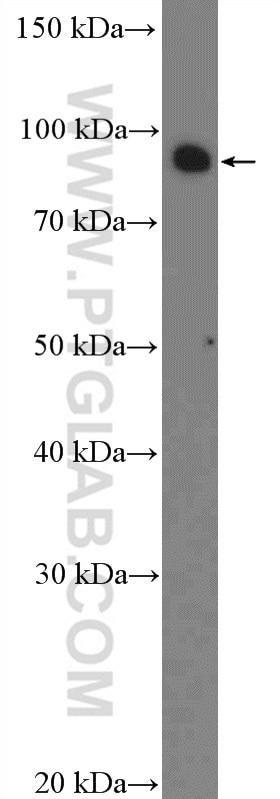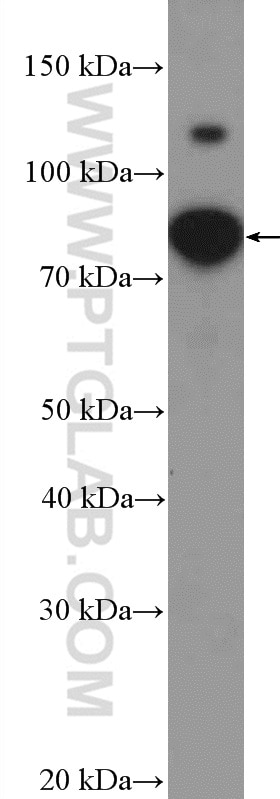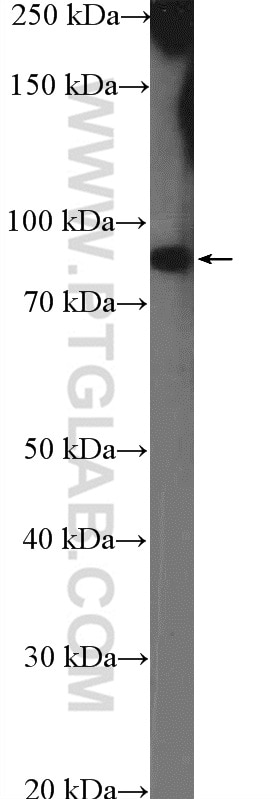Validation Data Gallery
Tested Applications
| Positive WB detected in | HeLa cells, Jurkat cells |
Recommended dilution
| Application | Dilution |
|---|---|
| Western Blot (WB) | WB : 1:1000-1:4000 |
| It is recommended that this reagent should be titrated in each testing system to obtain optimal results. | |
| Sample-dependent, Check data in validation data gallery. | |
Published Applications
| WB | See 3 publications below |
| IF | See 1 publications below |
| IP | See 1 publications below |
Product Information
26314-1-AP targets CCDC21 in WB, IF, IP, ELISA applications and shows reactivity with human samples.
| Tested Reactivity | human |
| Cited Reactivity | human |
| Host / Isotype | Rabbit / IgG |
| Class | Polyclonal |
| Type | Antibody |
| Immunogen | CCDC21 fusion protein Ag23636 相同性解析による交差性が予測される生物種 |
| Full Name | coiled-coil domain containing 21 |
| Observed molecular weight | 85-90 kDa |
| GenBank accession number | BC064528 |
| Gene Symbol | CCDC21 |
| Gene ID (NCBI) | 64793 |
| RRID | AB_2880475 |
| Conjugate | Unconjugated |
| Form | Liquid |
| Purification Method | Antigen affinity purification |
| UNIPROT ID | Q6P2H3 |
| Storage Buffer | PBS with 0.02% sodium azide and 50% glycerol , pH 7.3 |
| Storage Conditions | Store at -20°C. Stable for one year after shipment. Aliquoting is unnecessary for -20oC storage. |
Background Information
CCDC21, also named as CEP85, is a Centrosomal protein with MW 85 kDa. All the isoforms of CCDC21 can be detected by this antibody.
Protocols
| Product Specific Protocols | |
|---|---|
| WB protocol for CCDC21 antibody 26314-1-AP | Download protocol |
| Standard Protocols | |
|---|---|
| Click here to view our Standard Protocols |
Publications
| Species | Application | Title |
|---|---|---|
iScience Cep85 Relays Plk1 Activity to Phosphorylated Nek2A for Its Timely Activation in Centrosome Disjunction. | ||
Cell Rep Human VAPome Analysis Reveals MOSPD1 and MOSPD3 as Membrane Contact Site Proteins Interacting with FFAT-Related FFNT Motifs. | ||
Acta Pharmacol Sin Comprehensive multi-omics analysis elucidates colchicine-induced toxicity mechanisms and unveils the therapeutic potential of MLN4924 and kinase inhibitors |


